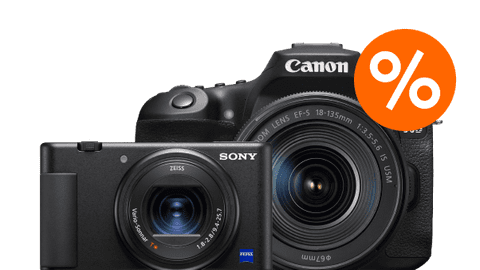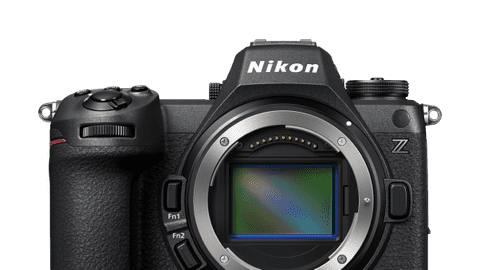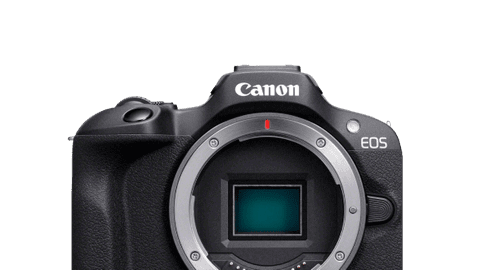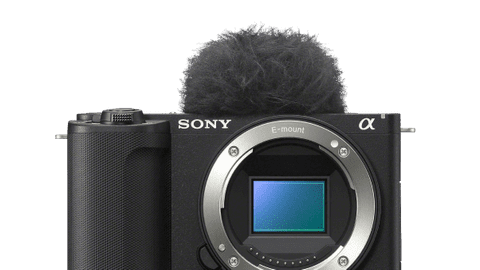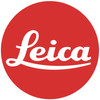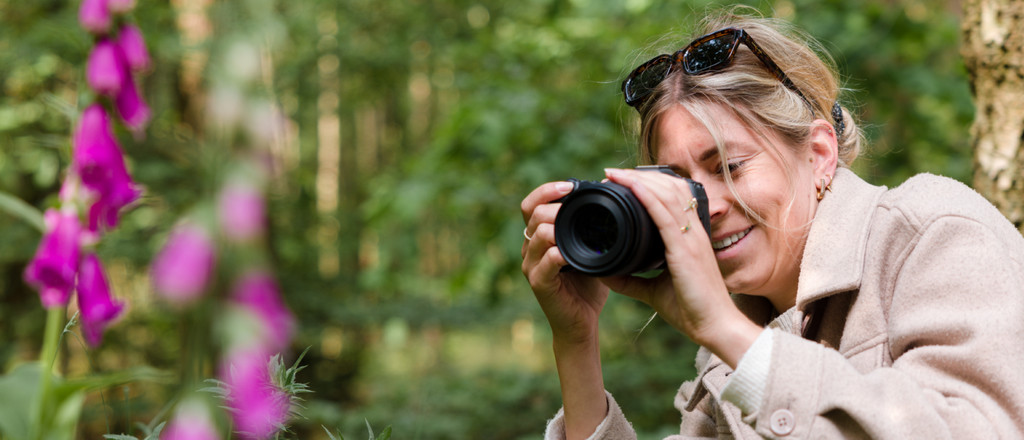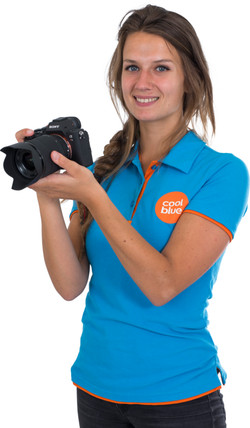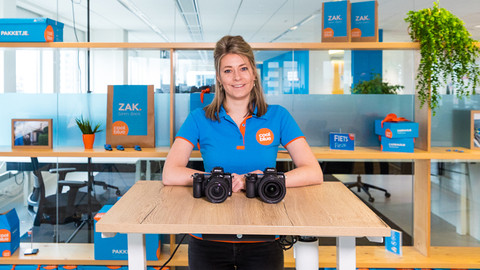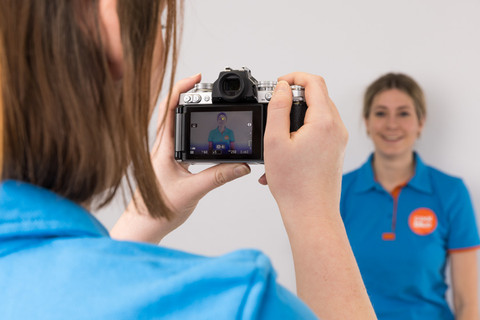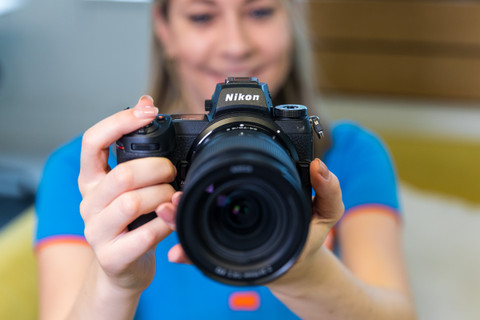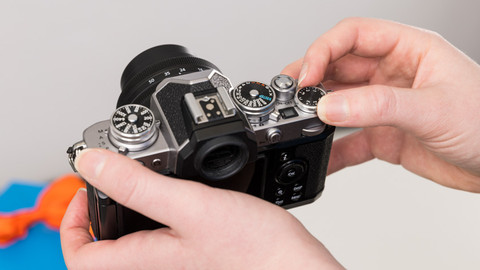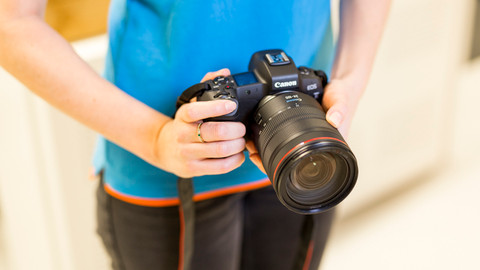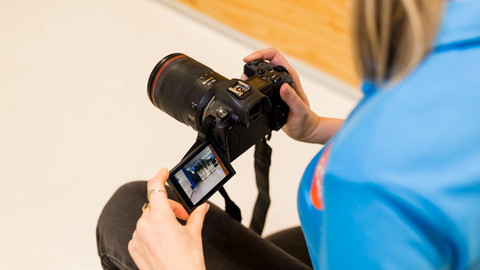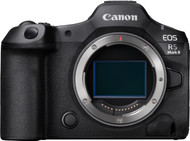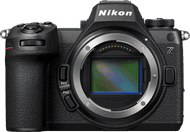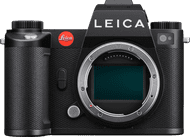Mirrorless cameras
Camera Weeks
The best camera deals for you.All mirrorless cameras
View the entire assortment of mirrorless cameras.Mirrorless cameras for beginners
Starter models that you can quickly master.Mirrorless cameras for vlogging
With the tiltable screen, you have a good image of yourself.
Help choosing your mirrorless camera
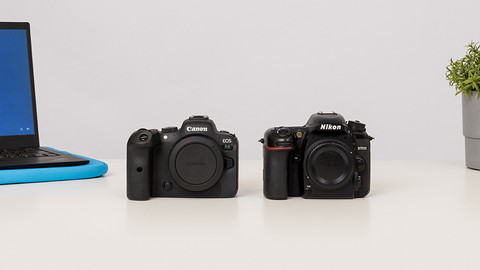
Compare the mirrorless camera and SLR camera
Type of image sensors

Full-frame sensors

APS-C sensors
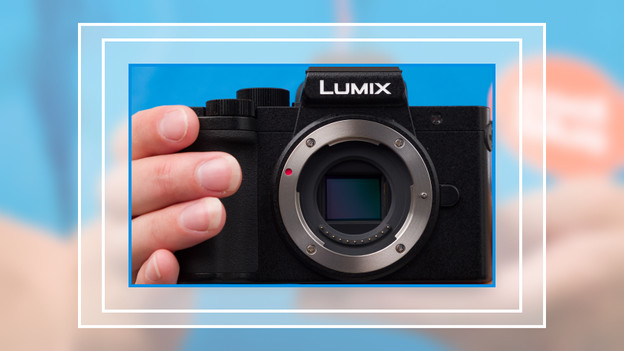
Micro Four Thirds (MFT) sensors
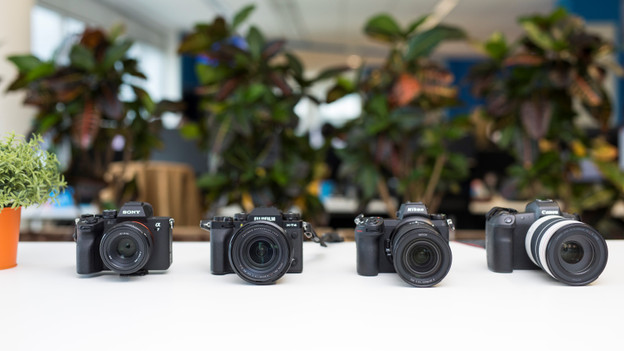
Everything on mirrorless cameras
Lenses for different usage situations

Wide-angle lenses

Portrait lenses

Telephoto lenses
Even more on mirrorless cameras
A professional mirrorless camera for every situation
Whether you create content for social media or prefer to capture nature: we have a suitable mirrorless camera for every situation.

- Capture action moments at 30 photos per second.Record professional video footage in 8K resolution.
- Take photos in JPEG at 60 photos per second and don't miss a single moment.Record RAW videos in 6K resolution and edit them accurately.
- Record smooth 4K videos at 60 fps.Capture subjetcs razor-sharp thanks to the autofocus with subject recognition.
- Thanks to the full-frame 60-megapixel sensor, you can take sharp photos with many details.Record professional video footage in 8K resolution.
Frequently asked questions
What's the difference between a mirrorless camera and an SLR camera?
These days, you can do just as much with a mirrorless cameras as with an SLR camera. Both cameras have good sensors with which you can take photos and videos in various lighting situations. An SLR camera has an optic viewfinder. This allows you to look at the scene through the mirror. A mirrorless camera has an electronic viewfinder, so you're basically looking at a small screen. With a mirrorless camera, you can generally take more pictures per second. This is great for sports and action photography, for example.
When do you choose a mirrorless camera?
A mirrorless camera is a digital camera with an exchangeable lens. With a mirrorless camera, you look at your subject via a digital viewfinder. An advantage of this is that mirrorless cameras are often more compact and lightweight. With an advanced mirrorless camera, you adjust the settings manually. That way, you can choose the right lighting by adjusting the ISO sensitivity, the aperture, or shutter speed.
Which mirrorless camera is suitable for beginners?
Are you looking for a mirrorless camera for the novice photographer? There's a wide range. Most mirrorless cameras have a standard lens that you can switch later when you want more options. Start your photography adventure with a complete mirrorless camera kit and get started right away. Or take the next step in photography and go for a professional mirrorless camera model. Click on the link below for the entire Coolblue assortment of mirrorless cameras for beginners.
How do I set up my camera manually?
Haven't mastered the technical part of your camera yet? There are many different manual settings available to get the most out of your photos. For example, you can influence the photos by adjusting the shutter speed, aperture, or ISO value. Click on the link below to read more information about manually setting up your camera. This way, you'll know exactly which settings you need to use to get the desired result.
What do all specifications on my camera mean?
A camera can do a lot and has all kinds of specifications. And they can be quite complicated. Because what do terms like ISO, shutter speed, and aperture mean? And what are image sensors and megapixels? We'll give you advice on all important camera specifications in the link below. We'll tell you what they mean, what they do, and how you use them.

